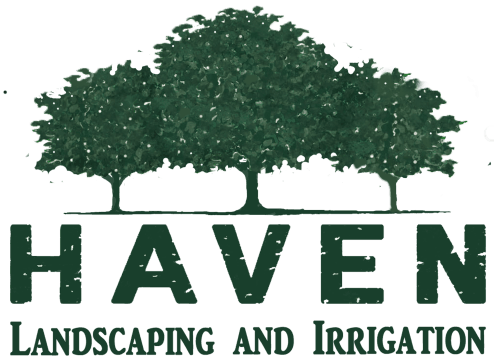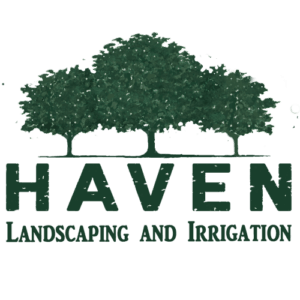
As an HOA board member or property manager, your goal is to have beautiful green grass at neighborhood entrances and in common areas. Accomplishing this in our dry, Texas heat can be a challenge and there are several things to consider for different warm-season grass types. Here are a few of the common grass types for Texas HOAs and the pros and cons of utilizing them in commercial landscaping.
Bermuda grass
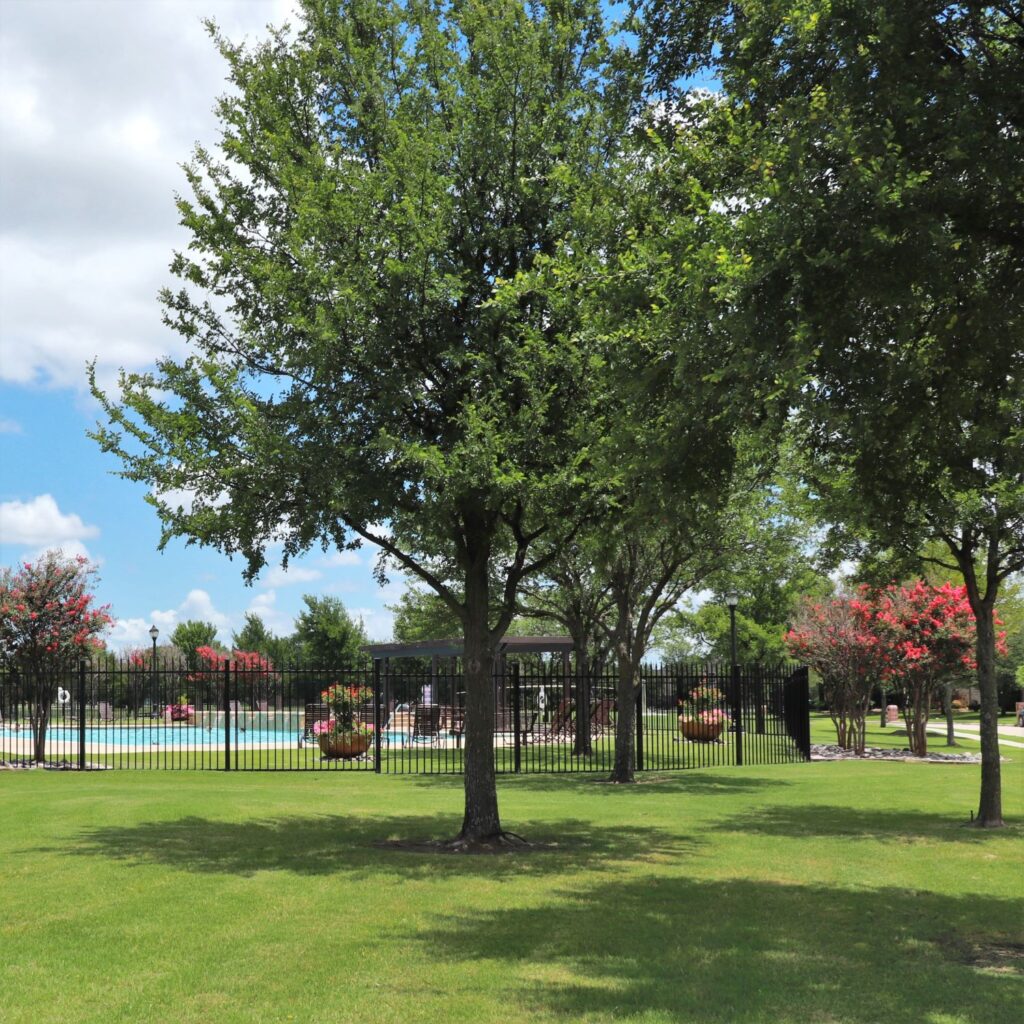
Pros:
Sometimes known as the “sports turf of the south”, Bermuda grass is a fine-textured, medium-green turf that does well throughout Texas. It adapts well to most soils and has excellent heat and drought tolerance. As a low-growing and dense species, it establishes rapidly and is able to choke out most weeds. It is durable to foot traffic and recovers fairly quickly from abuse. Because Bermuda is a low-growing species, it requires less frequent mowing than some other types of turfgrass.
Cons:
This grass type requires full sun so it is ill-suited to shady areas. Since Bermuda is fast-growing, it can be invasive and grow into flower beds and other landscaping features. This aggressive growth encourages thatch buildup. In addition, bermudagrass typically has trouble growing in cold weather.
Zoysia grass
Pros:
Introduced from Asia in the early 1900s, Zoysia has a lush carpet-like dark-green appearance. It is known as one of the best “barefoot grasses” due to its soft, cushiony turf.
It is ideal for areas with high foot traffic because of its thick mat, which also effectively chokes out weeds. Although Zoysia does best in full sun, it can handle moderate shade. Most importantly, it tolerates the Texas heat and drought and normally has lower fertilization and irrigation needs than other types of grass.
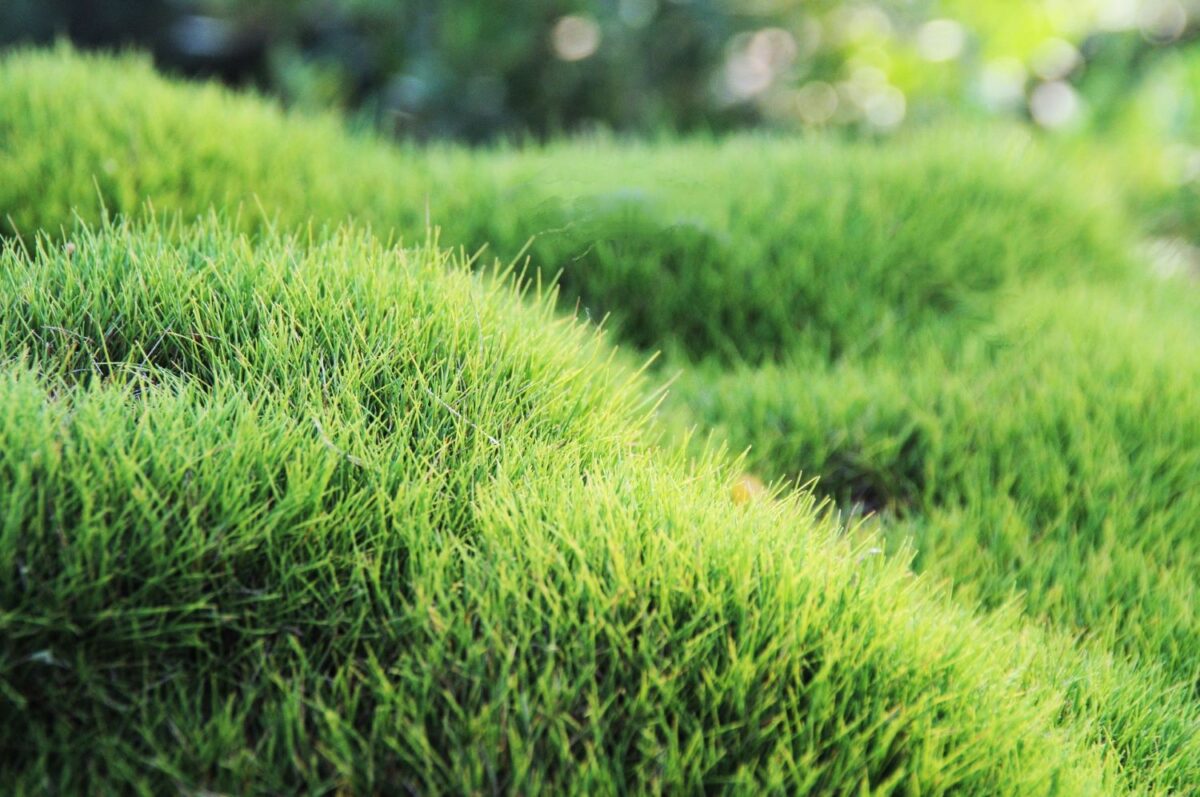
In addition, Zoysia maintains its green color during heat and drought conditions, while other grass types suffer and turn brown. The dense pile of zoysia allows for close mowing, giving a neat, groomed appearance to the landscape. Its low-growth habit also means less mowing than other warm-season grasses.
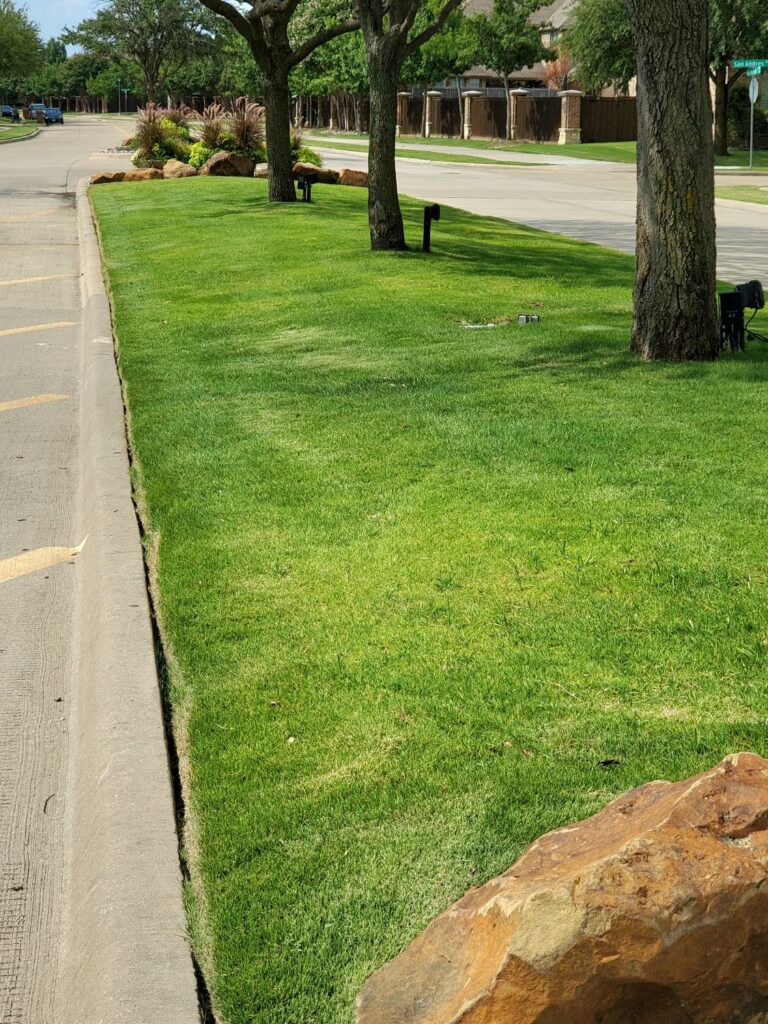
Cons:
As a slower-growing grass, a disadvantage of Zoysia is that it can be harder and take longer to get established. Something else to consider is that it turns brown mid-autumn and doesn’t green up until well into spring. Although it can be planted from seed, the most common and successful method is to use sod or plugs. Zoysia can be somewhat invasive and will usually overtake other grasses.
St. Augustine Grass
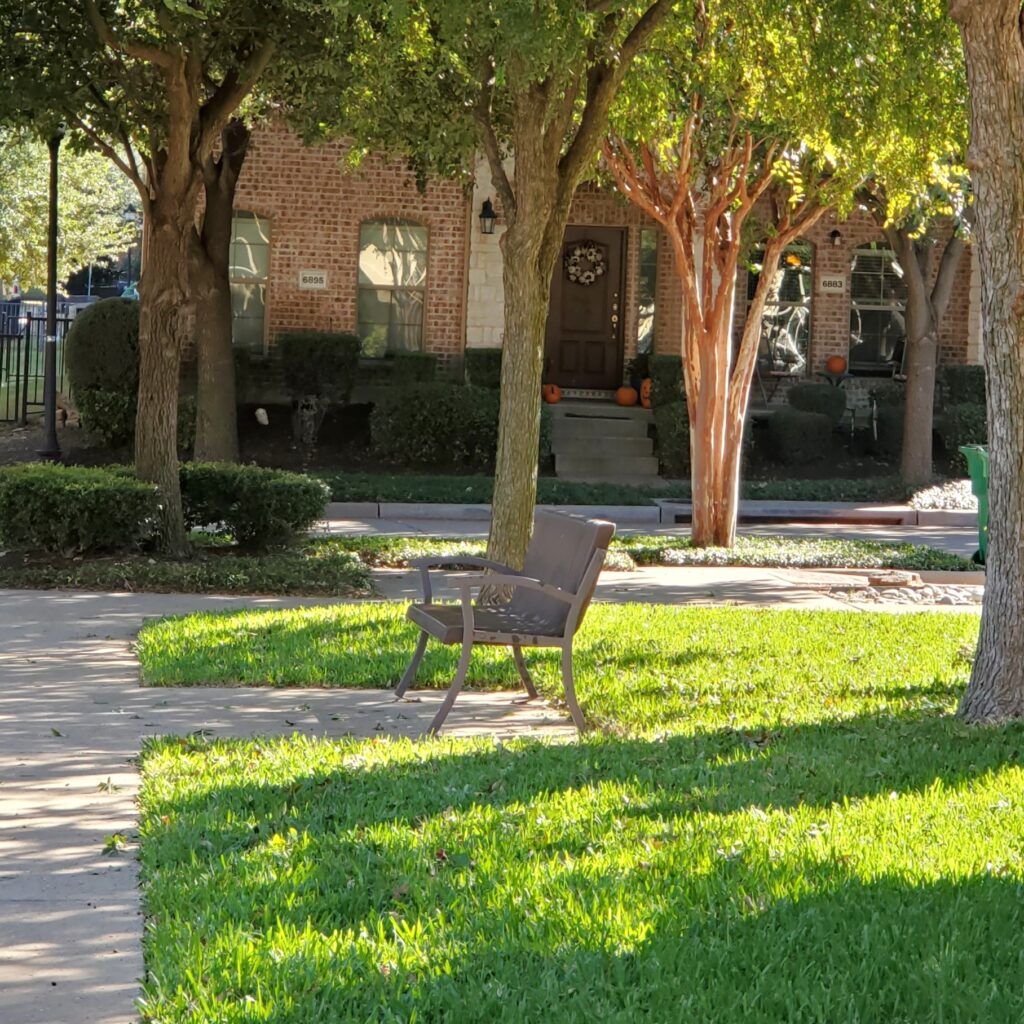
Pros:
St. Augustine is one of the most widely planted warm-season turfgrasses in Texas. It has a coarse texture and dark green color. Its superior shade tolerance relative to other warm-season grasses makes it a better choice for areas that do not get enough sun. It also tolerates heat and humidity well. St. Augustine grass spreads rapidly and aggressively by above-ground stolons, forming a dense layer of turf that is extremely effective in preventing and choking out weeds. In the fall, St. Augustine grass stays green longer than other common grass types for Texas HOAs.
Cons:
This aggressive growth means that St. Augustine is also invasive. When not properly controlled, it will usually choke out any other types of grass growing around it. St. Augustine is considered to be a high-maintenance turfgrass, requiring frequent fertilization during the growing season. It is also more susceptible to cold damage and certain pests and diseases. Another downside is that St. Augustine grass does not produce enough viable seed so it can only be installed by laying sod or planting plugs.
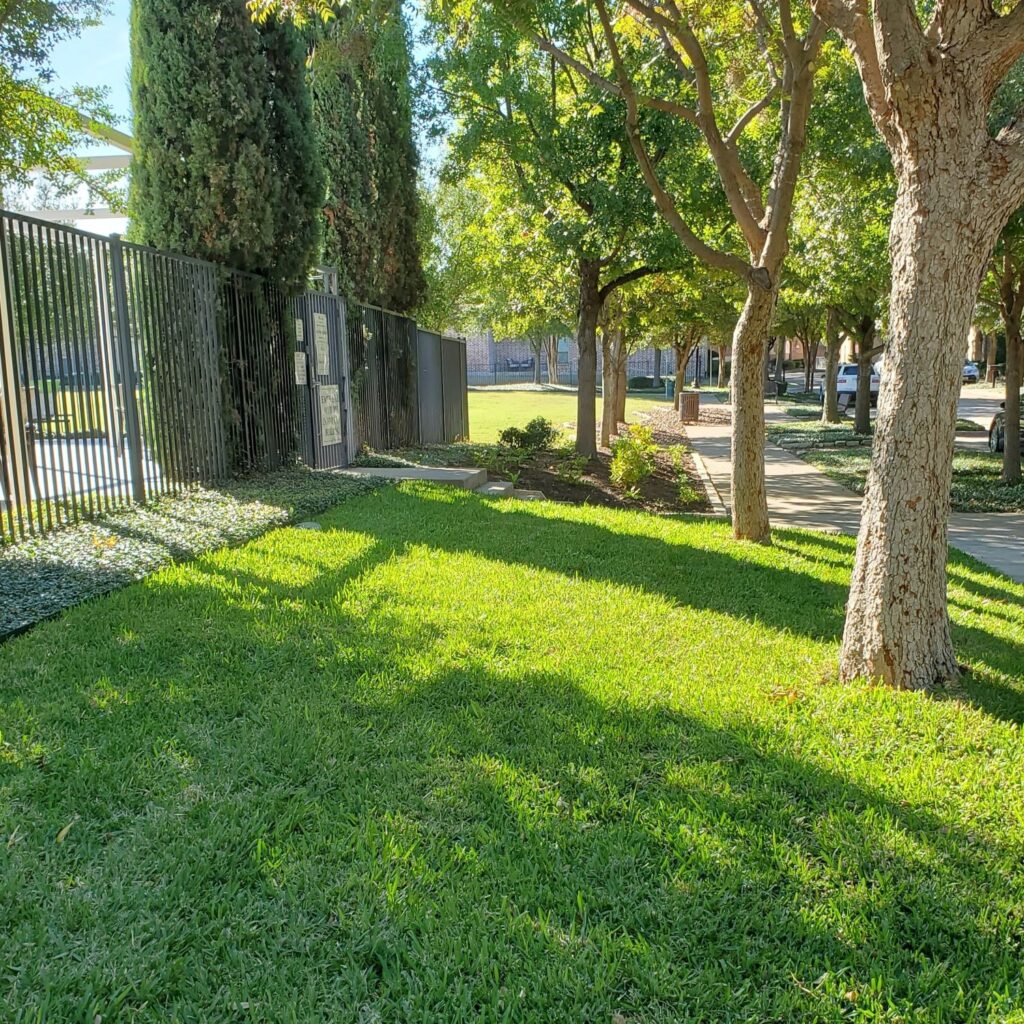
It is important to note that the best grass depends on the specific site conditions, including soil type, sunlight, and amount of use the area will receive. It’s best to invest in a professional commercial landscaper who can help recommend the best grass for your specific location.
